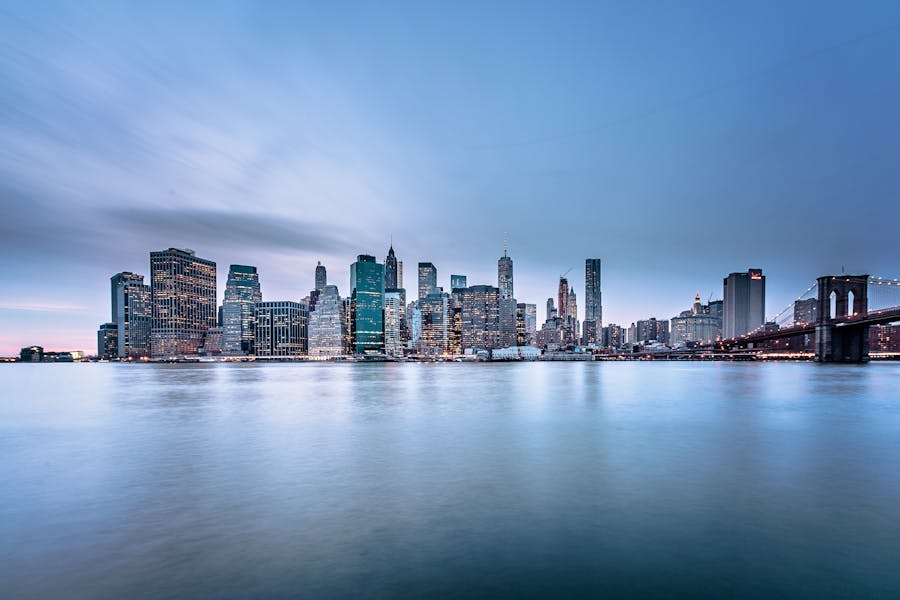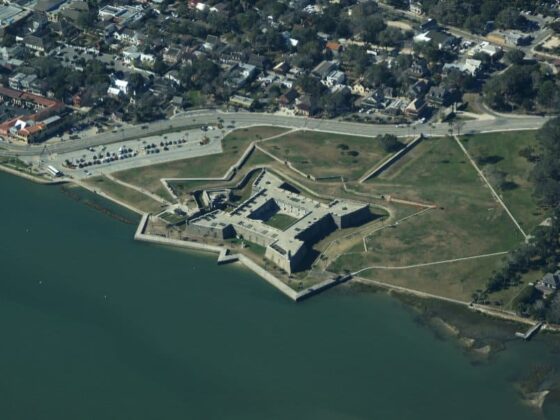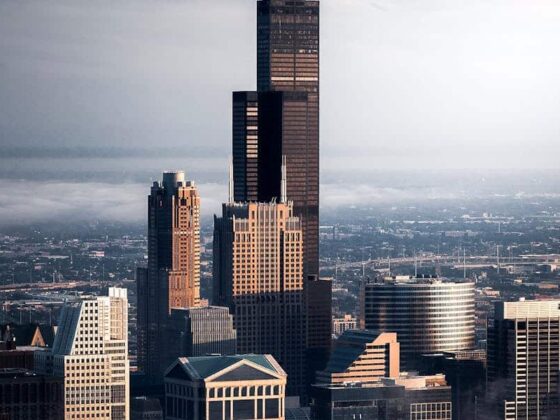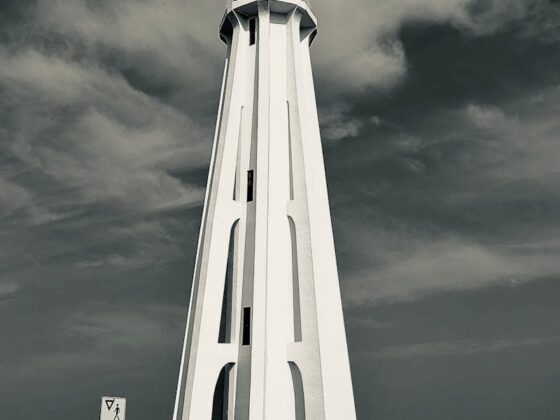Skyscrapers, towering symbols of architectural ingenuity and urban ambition, punctuate the skylines of cities across the United States, each telling a story of technological advancement and cultural aspiration. Among these, the quest to crown the tallest building in the country has spurred innovations in design and construction, reflecting a rich history of architectural competition and evolution. Currently, One World Trade Center in New York City holds the prestigious title, not just as a marvel of modern engineering but as a poignant symbol of resilience and renewal. This article delves into the fascinating world of America’s skyscrapers, exploring the architectural masterpiece that is One World Trade Center, its historical significance, and the ongoing quest for height that defines the nation’s cityscapes.
What is the tallest building in the US?
The tallest building in the United States is One World Trade Center, located in New York City. Rising to a symbolic height of 1,776 feet—a nod to the year of the Declaration of Independence—this architectural marvel not only dominates the New York City skyline but also serves as a symbol of resilience and rebirth following September 11, 2001. Its height, measured from the ground to the tip of its spire, makes it the tallest building in the U.S. and one of the tallest in the world. One World Trade Center combines cutting-edge architecture and engineering, featuring a striking glass facade and a spire illuminated at night, making it a beacon in the city’s landscape.
The Current Tallest Building: One World Trade Center
One World Trade Center, prominently located in Lower Manhattan, New York City, is the tallest building in the United States. Here’s a detailed breakdown of its defining characteristics:
Location and Height: Situated at the site of the original World Trade Center complex, which was destroyed during the terrorist attacks of September 11, 2001, One World Trade Center reaches a symbolic height of 1,776 feet (including its spire), a figure that commemorates the year of the United States Declaration of Independence.
Design and Construction: The building was designed by architect David Childs of Skidmore, Owings & Merrill, with construction beginning in April 2006 and concluding in 2013. Its design features a striking glass facade that reflects the sky and surrounding city, with a tapering structure designed to catch the light.
Symbolism: One World Trade Center is laden with symbolism, from its height to its foundation. It is a monument to resilience, freedom, and the enduring spirit of New York City and the nation.
Technological Innovations: The structure incorporates numerous technological advancements, including a reinforced concrete core for enhanced safety, energy-efficient design elements for sustainability, and advanced elevator systems for efficiency and comfort.
Observation Deck: The building hosts an observation deck known as the One World Observatory, which offers breathtaking views of New York City and beyond, providing visitors with an unparalleled experience of the city’s skyline.
Significance: Beyond its architectural achievements, One World Trade Center serves as a central component of the World Trade Center complex, which includes a memorial and museum dedicated to the events of September 11, as well as other commercial and memorial spaces.
Height Measurement: The height of One World Trade Center, including its spire, has been a subject of discussion. The spire is considered an integral part of its architectural design, contributing to its official height as recognized by the Council on Tall Buildings and Urban Habitat (CTBUH), making it the tallest building in the United States.
Historical Evolution Of The Tallest Buildings In The US
The historical evolution of the tallest buildings in the United States is a rich narrative that intertwines technological innovation, economic ambition, and cultural symbolism. It’s a story that unfolds across the changing landscapes of American cities, reflecting their aspirations and achievements over time. Here’s a more detailed exploration of this architectural journey:
Late 19th Century:
The inception of skyscrapers in America can be traced to the construction of the Home Insurance Building in Chicago in 1885. Designed by William Le Baron Jenney, the building was the first to use a steel skeleton structure, revolutionizing building design by allowing structures to reach unprecedented heights. Although relatively modest by today’s standards at 138 feet (42 meters), it marked the beginning of the skyscraper era.
Early 20th Century:
This era was characterized by fierce competition between New York City and Chicago. The completion of the Woolworth Building in New York City in 1913, at 792 feet (241 meters), exemplified the ambition of the time, combining Gothic architectural styles with the newfound capabilities of steel-frame construction.
1930s:
The Empire State Building set a new standard for skyscrapers worldwide when it was completed in 1931. At 1,250 feet (381 meters), it was an engineering marvel of its time. It would remain the tallest building in the world for nearly 40 years, a testament to the technological prowess and economic dynamism of the United States during a period of significant adversity, including the Great Depression.
Late 20th Century:
The 1970s saw a new era in skyscraper construction with the completion of the World Trade Center towers in New York City and the Sears Tower (now Willis Tower) in Chicago. The Sears Tower reached 1,450 feet (442 meters), showcasing innovative engineering solutions like the bundled tube design by architect Fazlur Rahman Khan, which allowed it to withstand the windy conditions of Chicago while reaching new heights.
Early 21st Century:
The destruction of the original World Trade Center towers in 2001 was a profound loss, not just in terms of architectural landmarks but also in the lives and sense of security it represented. The construction of One World Trade Center on the same site symbolized resilience and renewal. Completed in 2014, it reached a symbolic height of 1,776 feet (541 meters), including its spire, making it the tallest building in the United States. Its design incorporates numerous symbolic and functional elements, from its reflective façade to its fortified base, representing a balance between aesthetic beauty, commemorative significance, and enhanced safety measures.
Comparison With Other Tall Buildings In The US
The landscape of tall buildings in the United States is diverse and competitive, with numerous skyscrapers vying for prominence in the skies above American cities. While One World Trade Center in New York City currently holds the title of the tallest building in the U.S., several other skyscrapers come close regarding height, design, and innovation. Here’s a detailed comparison with other notable tall buildings across the country:
- Central Park Tower, New York City: As the tallest residential building in the world, Central Park Tower stands at 1,550 feet (472 meters) tall. While it doesn’t surpass One World Trade Center in height, its status as a residential behemoth sets a new standard for luxury living high above Manhattan. Unlike One World Trade Center’s symbolic significance and office space, Central Park Tower caters to ultra-luxury residential living, featuring breathtaking views of Central Park and New York City.
- Willis Tower (formerly Sears Tower), Chicago: Once the tallest building in the world was completed in 1973, Willis Tower reached 1,450 feet (442 meters), excluding its antenna. It’s renowned for its innovative use of the bundled tube design, allowing it to achieve great heights and withstand Chicago’s windy conditions. While it no longer holds the title of America’s tallest, it remains a symbol of architectural innovation and a significant landmark in the Chicago skyline.
- 111 West 57th Street, New York City: Known as Steinway Tower, this skyscraper is notable for its strikingly slender profile, standing at 1,428 feet (435 meters) tall. It represents a fusion of historic preservation and modern engineering, incorporating the historic Steinway Hall into its base and showcasing an ultra-thin silhouette that challenges skyscrapers’ engineering and design constraints.
- 432 Park Avenue, New York City: With a height of 1,396 feet (426 meters), 432 Park Avenue is among the tallest residential buildings in the world. Its design is characterized by a simple yet elegant grid of concrete and glass, offering expansive views and luxury amenities. The building’s square windows and regular grid pattern create a distinctive visual rhythm, contrasting with One World Trade Center’s tapering form and reflective facade.
- Trump International Hotel and Tower, Chicago: Standing at 1,388 feet (423 meters), this skyscraper is a mix of residential and hotel usage. Its design includes a series of setbacks that create a visual rhythm, echoing the architectural styles of historic skyscrapers while incorporating modern luxury and amenities.
- Empire State Building, New York City: An iconic symbol of New York City and the American spirit, the Empire State Building stands at 1,250 feet (381 meters). While it no longer holds the title of the tallest, its Art Deco design, history, and cultural significance remain unmatched. It symbolizes the architectural ambitions of the early 20th century and continues to be a major tourist attraction.
Bottom line
A stunning array of skyscrapers marks the architectural landscape of the United States, each contributing its unique silhouette to the country’s skylines. One World Trade Center currently stands as the tallest, symbolizing architectural achievement, resilience, and renewal in the face of adversity. However, the prominence of other skyscrapers like Central Park Tower, Willis Tower, 111 West 57th Street, 432 Park Avenue, Trump International Hotel and Tower, and the iconic Empire State Building showcases the diversity and dynamism of American skyscraper design. Each building, whether through its height, design, or historical significance, plays a pivotal role in defining the character of its city. Together, these towering structures reflect the ongoing innovation in architecture, the evolution of urban living, and the enduring ambition to reach new heights, literally and metaphorically, in the American spirit.
FAQ’s
Q. How is the height of One World Trade Center measured?
A. The height of One World Trade Center is measured from the ground level to the tip of its spire, which is consistent with the standards set by the Council on Tall Buildings and Urban Habitat (CTBUH) for architectural height.
Q. Does One World Trade Center hold any records?
A. One World Trade Center holds the record for the tallest building in the United States and was the tallest in the Western Hemisphere at its completion. Its height of 1,776 feet is also symbolic, representing the year of the Declaration of Independence.
Q. What makes One World Trade Center stand out from other skyscrapers?
A. Aside from its height, One World Trade Center stands out for its symbolic significance, innovative safety features, and sustainable design elements. It represents a milestone in architectural design, combining aesthetic appeal with functional and safety considerations post-9/11.










